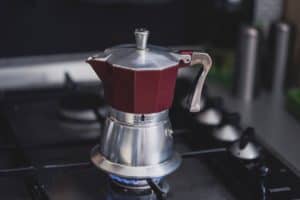
Hence the 120/240 volt circuit and receptacle works by providing a neutral wire which in turn provides a return path for the 120 volt current in the circuit.
This is hardly a do-it-yourself project because wiring mistakes can cause fire, injury, or damage to the stove. A professional and licensed electrician knows how to handle such projects with little or no stress on you.
Important tips for wiring a 120/240 volt receptacle for an electric range
- Run a 240-volt circuit from the circuit breaker to the location of the receptacle before anything else.
- Ensure that the circuit has sufficient amperage to supply power to the range. You will need to check the rating of the appliance to be sure of this. The circuit will be wired with three-wire cables that are white, black, red, and then an additional bare copper ground wire.
- If the range does not come with a power cord, you have to buy one separately and connect the cord yourself.
- The tools needed for completing this wiring project include the receptacle, screwdrivers, electrical box, wire cutters and cable.
Procedure
- Wiring a 120/240 volt receptacle for an electric range starts with the tips above. When the power cord has been attached and the 240-volt circuit breaker is installed, turn off power to the circuit to complete the wiring.
- Decide on the position of the receptacle following the current location of the range. Typically, the range should be plugged from behind or at the side in rare cases. Mark your receptacle spot on the wall behind the range and several inches above the ground. Also, ensure that the distance between the range and the receptacle is not so wide or long. The closer, the better. However, the receptacle should also be accessible to you.
- Install the electrical box of the receptacle. There are two main options for this which are the flush-mounted box and the surface-mounted box. The flush-mounted box falls within the wall while the surface-mounted box protrudes from the wall with rounded edges.
- Connect the cables to the receptacle box and be sure to tighten all the setscrews. Here is how the wires are connected- white neutral wire to the neutral screw terminal, bare copper ground wire to the grounding screw terminal, black and red hot wires to the remaining terminals.
- Tuck the wires into the box and screw on the receptacle faceplate. When everything is complete, turn on the power and test the 120/240 volt receptacle with your electric range.
This is a major electrical project that only a licensed electrical professional should handle. If you do not have the expertise in electrical wiring, please give us a call and we will be happy to help out!

